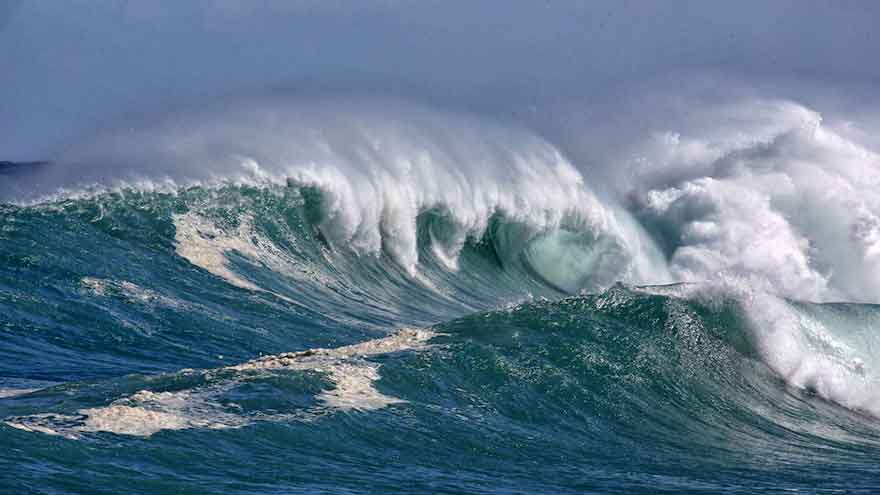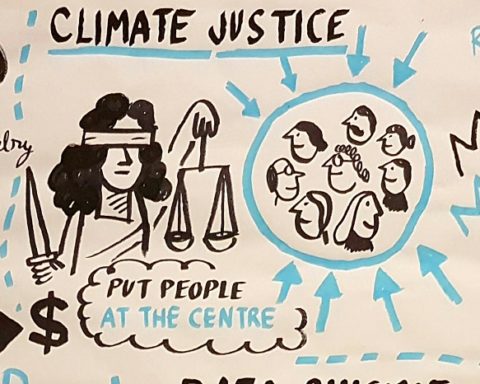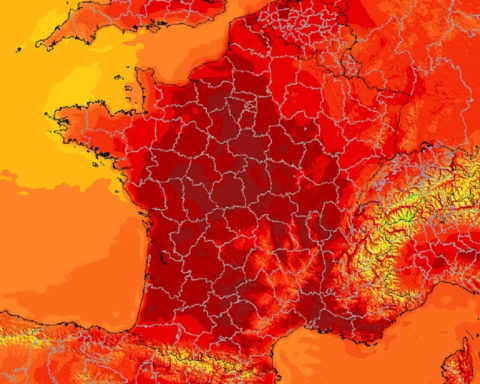In 2007, the BBC named Ioane Teitiota, a Kiribati national from the Pacific island of Kiribati, the first climate refugee. Teitiota and his family left for New Zealand in 2007 and applied for asylum as a climate refugee. He was returned to his home island by the New Zealand courts in September 2011.
Human history has always witnessed people fleeing natural disasters. Today, however, in the face of the increasing effects of climate change, their vulnerability is exacerbated.
From Protestants to migrants
The use of the verb "refugee" was established in France as early as 1435. It was first applied to Protestants who had left France for practice their faith.
In the context of the functioning of sovereign European nation-states, this term has a rather political scope under the Geneva Convention of 28 July 1951. Article 1 of this convention states that :
"The term "refugee" shall apply to any person with a well-founded fear of persecution for reasons of race, religion, nationality, membership of a particular social group or political opinion.
Political rhetoric has become accustomed to pitting economic refugees, i.e. migrants fleeing poverty, against these political refugees. Within the EU, internal and voluntary migration has become a thorny issue, with poor migrants from Eastern Europe being seen as profiteers from the advantageous social policy of the rich northern states.
Moreover, the terrorist attacks in the United States and Europe have brought to light a new category: refugees. turned into terrorists or terrorists disguised as refugees.

French refugees on the road to exodus in 1940. Bundesarchiv/Wikimedia
Environmental refugees, climate refugees, environmental displaced persons...
The term "environmental refugees" formally appears in the 1985 United Nations Environment Programme report. The word "eco-refugee" - as a synonym for "climate refugee" - is popularized in France in 2009.
There is, however, a small difference between environmental refugees and climate refugee. The former refers only to victims of natural disasters forced to leave their homes, while the latter refers to victims of climate change and global warming due to both natural disasters and human activities.
Similarly, a distinction is made between the "refugee" who has found international asylum and the "displaced" who has not crossed national borders and is therefore under the protection of his or her government.
As pointed out Christel CournilLecturer in Public Law (Paris 13) and co-author book Environmental migration, issues and governance :
"Environmental refugees, environmental refugees, climate refugees, environmental migrants, eco-refugees, displaced persons due to natural disasters... are the many expressions used to describe the displacement of populations due to environmental degradation. »
At the end of 2008, the UNHCR had identified 40 million of these environmentally displaced persons and one study jointly conducted by the UNU Institute for Environment and Human Security, the NGO Care and Columbia University's Center for an International Earth Sciences Information Network, predicts that by 2050 there will be 200 million.
The movement of these people who move because of climate change is from south to north. Developed countries are thus faced with a twofold problem: as they are not victims of persecution, the status of refugees is not a matter of concern. cannot be granted to them immigration and unemployment already divide Western societies sharply.
The reception of these forced migrants is therefore economically, socially and culturally difficult, even if there is a political aspect due to the respect of human rights.
Towards a legally binding status
Sweden and Finland have introduced in their legislation a protection mechanism for persons fleeing from environmental or natural disasters (see the Swedish Aliens Act (2005) and Finnish Aliens Act (2004)). Here, the environmental disaster can be a valid reason to apply for asylum).
Lawyers from the University of Limoges had drawn up an convention for their protection as of 2008. For these specialists, National Commissions should work on this issue together with a global agency with a global fund for environmentally displaced persons.
In 2009, British lawyer David Hodgkinson and his colleagues Tess Burton, Simon Dawkins, Lucy Young and Alex Coram argued for a collective acknowledgement of people displaced by climate change by proposing a draft convention.
Developed countries should offer resettlement and assistance plans to these displaced persons based on the principle of the joint but differentiated responsibility States and to provide a fund to deal with climatic events - whether slow or sudden - as well as a scientific establishment to assess the risks.
The principle of climate justice put forward during COP15 in Copenhagen saw the birth of the international campaign for climate refugees to demand a legal framework. The adoption of paragraph 14(f) of theCancun Agreement in December 2010 by COP16 indicates, on the other hand, that States have recognized that climate change-induced migration is a factor that must be taken into account.
As a result of the Nansen Conference held in Oslo in 2011, Norway and Switzerland pledged to develop a coherent approach to implement the ten Nansen principles.
The Nansen Initiative
It is in this context that theNansen Initiative was launched in 2012. The multiple stakeholders in this consultation process clarified that the initiative does not aim to develop new legal standards, but to build consensus on the elements of a protection agenda. It is up to political actors at different levels (national, regional, global) to come up with legal instruments or bilateral agreements or an applicable international convention.
The Nansen Initiative focuses on cross-border IDPs and emphasizes the preventive approach, trying to reduce the vulnerability of countries at risk, increase their resilience and make their disaster management more effective. However, it does not forget thepersonal assistance displaced.
The parties are considering amending international refugee law to include environmental and climate refugees, establishing binding protection for internally displaced persons or drafting a new convention for eco-refugees, as well as regional agreements to deal with catastrophic scenarios such as the loss of island states.
Critics point to the ambivalence of the debate: it is difficult to argue that it is environmental degradation that causes migration. Similarly, it is difficult to distinguish between economic refugees and environmental refugees. Competition between eco-refugees and economic refugees for vital resources can, in turn, lead to conflict. The qualification of "climate refugees" may, on the other hand, diminish the attention that should be paid to eco-refugees as such.
All nomads, all refugees?
Everyone agrees today that the paradigm of the nation-state, which establishes the limitation of migration as a sine qua non for its stability, needs to be reviewed. Human mobility induced by the dynamism of the capitalist system and supported by mobile technologies questions our sense of identity and belonging.
In an increasingly globalized world, we are both from everywhere and from nowhere. The distinction between the rooted and the migrant, the host and the guest is blurring in favour of a perpetual and mutual metamorphosis. And given thecurrent climatewe will all be climate refugees one day and may have to seek asylum far from Earth.
Geetha Ganapathy-DoréHDR Lecturer in English, University of Paris 13 - USPC
The original text of this article was published on The Conversation.












